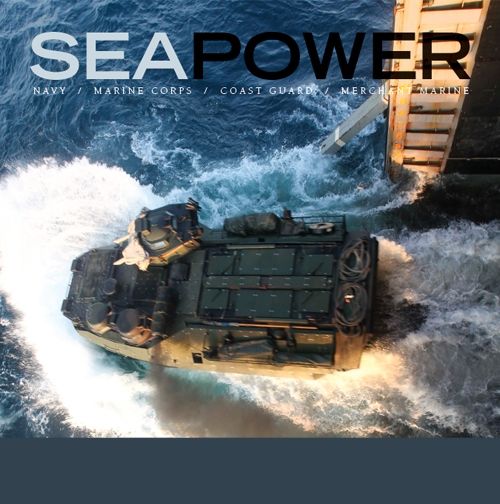Ramping up for US Fed. government contract season with DARPA.
DARPA is working to get troops high-tech tools that see beyond walls and automatically provide targets, among other emerging technologies.


Are you tired of your poor selections for political leaders? Maybe you like a new type of government all together. If so, well do I have the story for you. It’s their e-Government as a Service.
If the United Arab Emirates has a minister for happiness (and it does), then why can’t a country have a CIO? Taavi Kotka sees no reason why not and he has been chief information officer for the Estonian government since 2013. Kotka is working to help the country attempt to achieve what it calls a ‘sustained march towards modernity’. The new Estonia wants to be a sort of ‘start-up nation’ with a new digital infrastructure to deliver public and private services.
But E-government (or eGovernment if you prefer) is nothing new, so what makes Estonia worth the E value and is it doing anything radically different?
Kotka insists that digitization is changing the mechanisms of citizen political involvement, public administration and democracy itself. This is not still news though i.e. groups like the Maker Movement and Code For America have been championing personal individual involvement in public services for some time now.
A new underwater GPS.
For all the benefits that the Global Positioning System provides to landlubbers and surface ships, GPS signals can’t penetrate seawater and therefore can’t be used by oceangoing vehicles like submarines or UUVs. That’s why DARPA is creating an acoustic navigation system, dubbed POSYDON (Positioning System for Deep Ocean Navigation), and has awarded the Draper group with its development contract.
The space-based GPS system relies on a constellation of satellites that remain in a fixed position relative to the surface of the Earth. The GPS receiver in your phone or car’s navigation system triangulates the signals it receives from those satellites to determine your position. The POSYDON system will perform the same basic function, just with sound instead. The plan is to set up a small number of long-range acoustic sources that a submarine or UUV could use to similarly triangulate its position without having to surface.
The system should be ready for sea trials by 2018. It will initially be utilized exclusively for military and government operations but, like conventional GPS before it, will eventually be opened up to civilians as well.

I love contract season with the US Government because you get to see all of the cool projects being awarded.
CAMBRIDGE, MA — The U.S. military’s unmanned underwater vehicles (UUVs) depend on stealth as they conduct surveillance and reconnaissance and other missions in the deep oceans. With Global Positioning System (GPS) signals unable to penetrate the ocean’s surface, these UUVs can rely on inertial sensors to provide acceptable positioning information during short missions. On longer missions, however, inertial sensors accumulate error, forcing the vehicles to risk exposing themselves to enemies as they periodically surface to obtain a GPS fix.
The Defense Advanced Research Projects Agency (DARPA) is addressing this issue by funding the development of a small number of acoustic transmitters that can be anchored to fixed locations around ocean basins to serve as an undersea navigation constellation, according to a May 10 release by the Cambridge-based nonprofit company Draper.
By measuring its range to multiple signals emanating from known coordinates, an undersea vehicle can operate continuously with accurate navigation information without needing to surface for GPS fixes or to use high cost inertial systems that are typical of current UUVs. DARPA awarded a contract on March 15 to a Draper-led team to begin development of a solution for the Positioning System for Deep Ocean Navigation (POSYDON).

My new article on how some technologies will inevitably make the government smaller:
However, there’s reason to believe that in the near future, government might dramatically shrink—not because of demands by fiscally astute Americans, but because of radical technology.
Indubitably, millions of government jobs will soon be replaced by robots. Even the US President could one day be replaced, which—strangely enough—might bring sanity to our election process.
But it’s not just robots, it’s software programs and weird new tech that will do the replacing. Consider the over 1 million firefighters, a staple part of American government that also represents the ideal of service and career to one’s country. Companies around the world are now building fireproof everything, including couches, furniture, and building materials that simply don’t burn well. And intelligent robots—which I think will be in 50 percent of American households within five years time—will all have fire and carbon monoxide detectors.
In fact, I’m certain many in-home robots will not only be loaded with numerous security alert systems (like intruder alarms, flood warnings, and the ability to detect snakes, scorpions, and spiders) but will also be able to fix problems that occur. It’s likely in just a few years time, in-home robots costing less than a $1,000 dollars will know how to put out a fire with an extinguisher, turn off a flooding bathtub, or squish a black widow.

I personally can confirm that QC is not being worked on and advance by just a couple groups such as D-Wave and IBM. The questions/bumps in the road that we will all face is threefold:
1) how do we standardize the QC? right now (like most innovation) is done in siloes and limited cross-collaboration across government, labs & universities, and commercial companies. 2) governance and compliance; how will these need to change across multiple areas 3) id & mitigate all impacts instead of after deployment (don’t be reactive) because we will not have that luxury due to hackers.
There is a temptation to lump quantum computing in with technologies such as fusion power in the sense that both have been proposed for decades with the promise of tremendous leaps in performance.
Whilst fusion power continues to frustrate, there are signs of real progress being made in quantum computing. There is barely a tech giant in the world that doesn’t have dedicated teams working on the topic, and these teams are beginning to bring quantum computing out of the lab and into the real world.
At the forefront of this is IBM, who recently announced that they would connect up a quantum computer to the web and allow us to play with it. The project involves a 5 qubit machine, with a qubit allowing it to operate in both ‘0 and 1’ states at the same time, thus increasing its potential computational power enormously. A one qubit machine has roughly 16 possible states, but once you get over 300, you begin to exceed the number of atoms in the universe.

I do love and believe in the benefits of 3D printing; however, as a technologist and concerned informed citizen I do worry about this technology getting the hands of drug lords, terrorists, and other criminals. With Medical 3D printing; illegal drug manufacturing can change overnight and expanded to new levels of mass production. Also, illegal weapon production can be enhanced as well with 3D printing.
At this point, law enforcement in 1st and 2nd world countries are going to face harder times than they ever have in the recent past and before. 3D Printing and AI are truly going to take an already difficult situation for government and their law enforcement teams extremely tough in the coming 3 to 5 years; and hope they and tech come together to figure out a good go forward plan to ensure right benefits are received and progress not slowed down while keeping everyone safe.
Materialise incorporates more than 25 years of 3D printing experience into a range of software solutions and 3D printing services, which together form the backbone of the 3D printing industry. Materialise’s open and flexible solutions enable players in a wide variety of industries, including healthcare, automotive, aerospace, art and design, and consumer goods, to build innovative 3D printing applications that aim to make the world a better and healthier place.
Fried Vancraen, CEO of Materialise – recently called upon industry stakeholders to come to an agreement for a common standard for measuring the clinical, economical and patient benefits of medical 3D printing.

CRISPR to take bio- and dirty-bombs to new levels.
Great; however, QC needs to be front and center on this; or, I see a bunch of funding spent on research that will be render useless by the time it goes to market due to the progress in QC.
I truly feel bad for the labs who are having to tests for bio- and dirty-bomb material. Really a dangerous job.
The Defense Advanced Research Projects Agency (DARPA) is looking for research proposals to develop a system that would enable the government and law enforcement to identify the actual individual behind a cyber attack.
The Enhanced Attribution Program proposal is looking to create the technology that would allow not only the collection of data that could pinpoint the perpetrator, but do so in a way that would not put at risk the sources and methods used to find the person or group. From DARPA’s perspective the need for this is quite straightforward.
“Malicious actors in cyberspace currently operate with little fear of being caught due to the fact that it is extremely difficult, in some cases perhaps even impossible, to reliably and confidently attribute actions in cyberspace to individuals,” DARPA wrote in the 43-page proposal.


The question breaks down into two parts:
Governments are in the business of regulating certain activities—hopefully in an effort to serve the public good. In the case of business methods and activities, their goal is to maintain an orderly marketplace; one that is fair, safe and conducive to economic growth.
But regulation that lacks a clear purpose or a reasonable detection and enforcement mechanism is folly. Such regulation risks making government seem arbitrary, punitive or ineffective.
«— This is money. It is not a promissory note, a metaphor, an analogy or an abstract representation of money in some account. It is the money itself. Unlike your national currency, it does not require an underlying asset or redemption guarantee.
Bitcoin is remarkably resistant to effective regulation because it is a fully distributed, peer-to-peer mechanism. There is no central set of books, no bank to subpoena, and no central committee to pressure (at least not anyone who can put the genie back into the bottle). In essence, there is no choke point or accountable administrative party.
Sure—it is possible to trace some transactions and legislate against ‘mixers’ and other anonymization methods—but there is no way to prevent a transaction before it occurs or to know the current distribution of assets. Bitcoin can exist as a printed QR code and it can be transmitted from a jail cell with a blinking flashlight. Sending bitcoin from Alice to Bob has no intermediary. Settlement requires only that one of the parties eventually has access to the Internet. But, there is no credit authority or central asset verification. [continue below image]…

If you are thinking of legislating against the use of Bitcoin, you might as well pass laws to ban the mating of feral cats or forbid water from seeping into underground basements. These things are beyond the domain of human geopolitics. You can try to shape the environment (e.g. offer incentives to cats and water levels), but you cannot stop sex or seepage.
Fortunately, Bitcoin is not a threat to governments—not even to spending or taxation. A gross misunderstanding of economics and sociology has led some nations to be suspicious of Bitcoin, but this improper perception is abating. Governments are gradually recognizing that Bitcoin presents more of an opportunity than a threat.
I have written more extensively on this issue:
Philip Raymond is co-chair of Cryptocurrency Standards Association, MC for The Bitcoin Event in NY and board member for Lifeboat Foundation. This fall, he will teach Cryptocurrency and The Blockchain in Massachusetts.